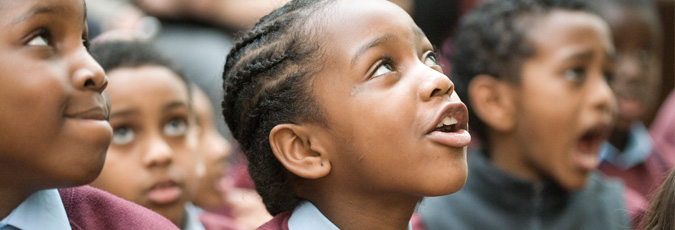Developing ways of looking
There are many ways of supporting children to look at paintings. Here are a few suggestions that work in the Gallery and the classroom, alone or in combination. All of them enable children to look at length, gathering the visual information needed for them to make a fuller personal response.
Jump in
Invite the children to imagine jumping into the frame. Suggest they explore in front of the painting, behind it, around it. Then lead their looking further by asking questions such as: What would they see, hear, smell, feel? Where would they rest? Who might they want to talk to? What might they want to ask?
Take a walk
Ask the children to let their eyes take a walk around the picture. Look at the
- Top
- Bottom
- Foreground/closest thing to them
- Background/what is far away
- The people/objects
Describe and imagine
Divide the children into pairs. Ask A to close their eyes or have their back to the painting while B has their eyes open, facing the painting. B describes the painting for A to imagine.
Take a mental photo
Tell the children that they are going to have the time you count to 10 to look at the painting as closely as possible. Ask them to remember as much as they can. Invite them to take a mental photo.
Take the painting off the screen or walk behind the group and ask the students to turn around. Brainstorm everything that they can remember before turning back (or revealing the image again) and identify what has been missed.
Look and draw
Ask the children to sketch what they see. This could be done in many different ways. You could tell the children to:
- Keep their pencil on the paper without taking it off
- Use their wrong hand
- Draw only the empty spaces they see
- Use only lines and shapes
- Draw and then pass their drawing to the next person to continue every 20 seconds
- Repeat three times, each with a reduced amount of time
Next: Developing responses

